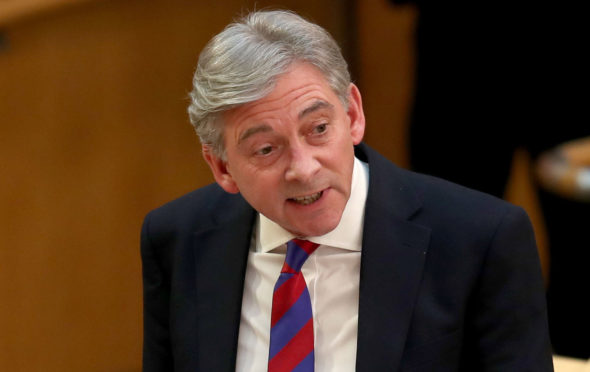
The Scottish Labour Party couldn’t have picked a better day for its opposition debate in support of the Ready for Renewal campaign.
Still reeling from the devastating results in the European election which saw it pushed into fifth place in the polls behind the SNP, the Brexit Party, the Lib Dems and the Tories, never was there a more needed exploration of how the party should reboot.
But while the subject matter and the accompanying hashtag – #renewal – was the right one, the debate was not unfortunately on the future of the Labour Party, but on the importance of the renewables industry and for a call for more investment in the mothballed BiFab yards in Fife.
The gravity of the issue to the local economy was a principled one, but it felt at times anachronistic to be talking of past industrial glories when the elephant in the room was less the future employment of a skilled workforce, and more the immediate job prospects for the party leader, Richard Leonard.
The European election results were a disaster for Labour UK-wide but even worse in Scotland and within the space of 48 hours, not only was Leonard wrestling with the fall-out over the Labour share of the vote in Scotland, having dropped to single figures, but he was also grappling with the departure of two high-profile frontbench MSPs, including his closest ally, Neil Findlay.
If it couldn’t get any worse, Labour politicians, past and present, weighed in with their own tuppence-worth. A former party chairman said the party was now on “life-support”.
Sitting MSP, transport spokesperson and former General Secretary of the party, Colin Smyth, said Leonard – his boss – was seen to be too close to Corbyn and needed to “start to become his own man”. And in response to a Labour source that said on social media that they would take no lessons from those whose decisions and policies had taken the party to third place in Scotland, former Scottish leader Kezia Dugdale, who had taken the party to third, tweeted: “You’re 5th, mate.”
Leonard is the ninth leader of Scottish Labour in 20 years, and all, to a greater and lesser extent, are culpable for the fall and latterly more accelerated decline of support for the party.
Labour has been caught in a decade-long – arguably much longer – maelstrom of constitutional arguments that it has not seen as part of its core cause and as a result, has been slow to recognise that it needed to be part of that fight.
It is now stepping up the ante on its work around a constitutional offering and that will have, at its heart, the principle of where power should lie. It is expected to recommend the devolution of any powers that would allow for local solutions, particularly around employment.
Leonard is a decent, principled and thoughtful man but, after a career in the trade union movement, his naivety as leader has been a surprise. He needs to assert his authority and be clear about his vision for Scotland.
A Brexit based on lies driven by a Conservative Party fighting for its survival, that’s where Labour should be taking the fight, not fighting with each other.

Enjoy the convenience of having The Sunday Post delivered as a digital ePaper straight to your smartphone, tablet or computer.
Subscribe for only £5.49 a month and enjoy all the benefits of the printed paper as a digital replica.
Subscribe